There are many great places to fish for salmon in Alaska. Fishing in rivers and streams can be done from the bank, in the water with waders, or from a drift boat. Millions of salmon spawn each year in Alaska but not everyone knows where the best fishing spots are located.
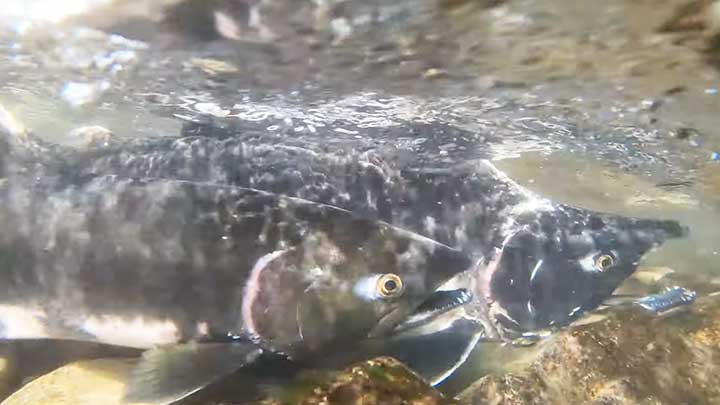
Some streams are heavily fished due to easy road access and large numbers of fish. The further you are willing to travel via hiking, float plane, or boat the fewer anglers there will likely be on the river. Some streams I have fished have no other people fishing at all. Other times in peak season you are going to have to deal with other anglers that is part of stream fishing in a popular spot. Luckily Alaska is huge, there are many rivers and millions of salmon. For this reason, I see no good reason to stand shoulder to shoulder with other anglers while fishing.
In May there will be fewer people fishing the streams but also less salmon. Late June- Early September is generally considered peak salmon fishing in Alaska. However, there are five different types of salmon and they all have runs at different times for different rivers. Generally, the salmon come at predictable times but the runs can vary by a few days from year to year. This variation could be based on the weather, glacier melt, or rainfall, but in reality, it is amazing how consistent their timing is from year to year with each run of fish.
Great Rivers to Fish in Alaska
1. Kenai River
The Kenai River is 82 miles long and is a great place to fish as it is about a 2.5-hour drive from Anchorage. The river is broken up into three sections the upper, middle, and lower river. Each area along the river has different fishing regulations. The recent average number of fish that enter the Kenai river based on Alaska Fish and Game fish counts are as follows.
King Salmon or Chinook Salmon
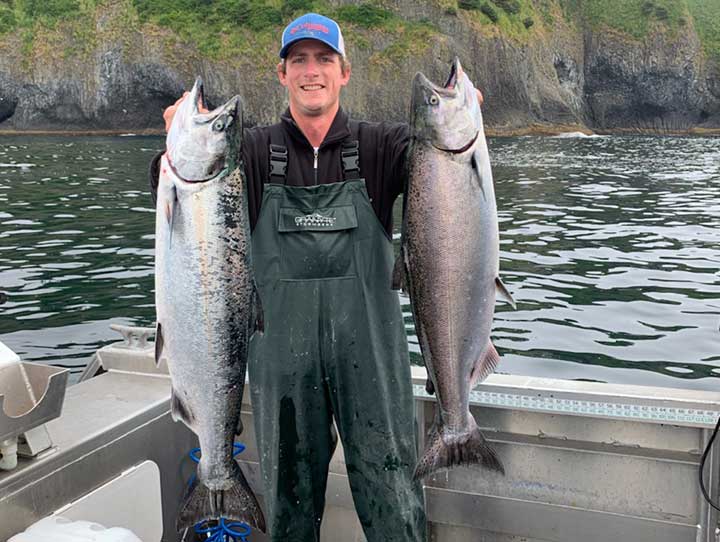
| Early Run | Late May-June 30 |
| Averages | Around 3,200 King Salmon. |
| Late Run | July 1st – Mid August |
| Averages | Around 13,000 King Salmon. |
In recent years king salmon have been catch and release only due to low numbers of fish. The Kenia is actually a very popular location to fish for King salmon, not for their number but because of their large size. In May of 1985, a King Salmon over 97 pounds was caught on the Kenia River which is the current sport caught world record. The picture above is of two king salmon I helped catch in Sitka Alaska. I have actually not targeted kings in the Kenai River.
Red Salmon or Sockeye Salmon
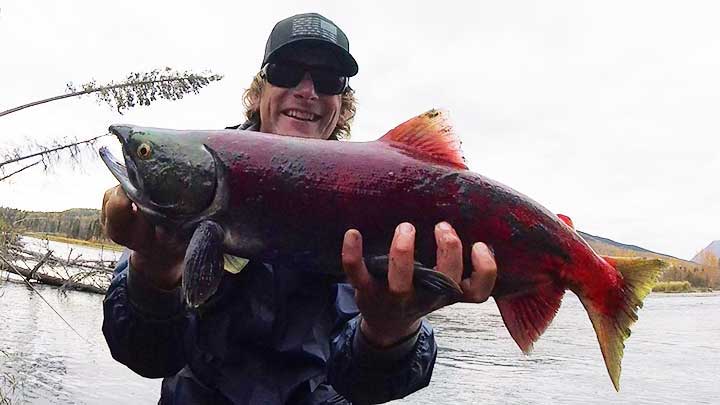
| Late Run | Mid July – August 24 |
| Averages | Around 1,800,000 Sockeye Salmon |
The Kenia River is known for its large kings and the high number of reds which are sockeye salmon. These are great eating fish and are fun to catch in the river. There is no closed season for sockeye salmon. Each day the angler can retain 3-6 sockeye salmon per day depending on the date and location being fished. Sockeye salmon weigh from 5-15 pounds with an average fish being around 9 pounds. If they are going to be kept to eat it is important to catch them when they are bright chrome and not turned red and green yet.
High numbers 100,000 plus are north of the sonar station at mile marker 19 starting around July 12th. The number exceeding 500k is around July 27th. Realize in early July these counts are from two miles downstream of the Sterling Highway bridge. It will take a few more days to see high numbers in the upper Kenia River past Skilak Lake. Late July through August is really prime time for reds. Catching them as early as possible when they are bright silver is best for meat quality.
There is also an early run of around 25,000 Sockeye that go into the Russian River from mid-June to Mid-July. These fish have to swim through the lower, middle, and half of the upper Kenai before reaching the Russian River.
Pink Salmon or Humpy Salmon
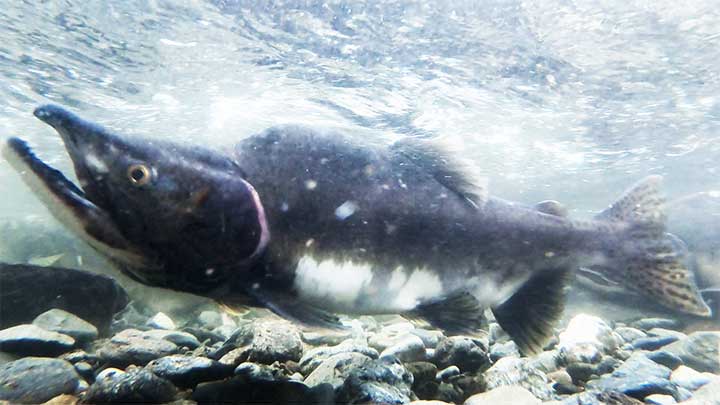
In even years there are large runs of Pink Salmon in the Kenia River. I did not find an exact number but there are millions of pinks that return on even years. These salmon are not as desirable from a food standpoint but they are super fun and easy to catch. They will bite lures and baits much more than red salmon. If you just want to catch and release lots of salmon, coming on an even year and going for pinks is a good idea.
Silver Salmon or Coho Salmon
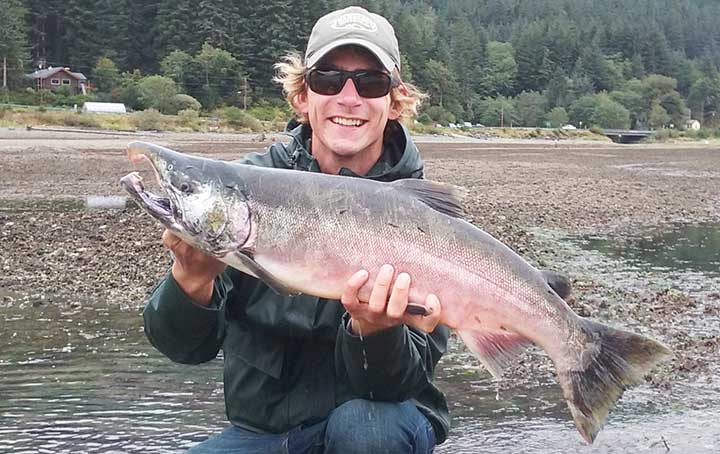
About 1,500 silver salmon enter the Russian River from mid-august to mid-September. There is a more abundant run of Silvers from late September to early October but I could not find the exact count. It is a good fishery though and these fish can be caught with inline spinners which is a fun way to catch salmon.
Chum Salmon or Dog Salmon
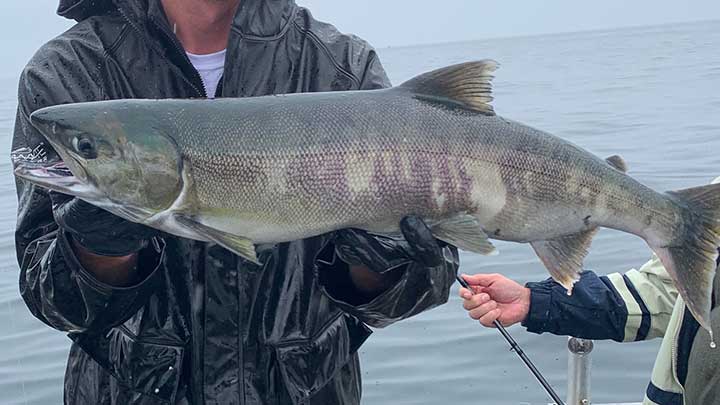
There are Cumb salmon in the Kenia River but the numbers are low. For this reason and that the meant quality is low once in the streams these are not typically targeted by anglers.
Jumbo Rainbow Trout
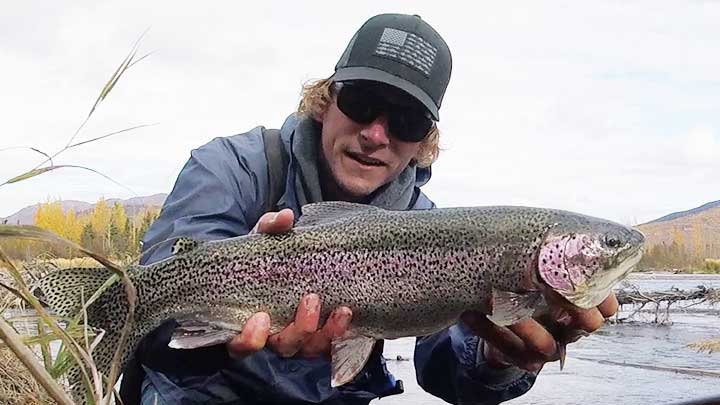
September through October once the salmon fishing has slowed down is a great time to fish for jumbo rainbow trout on the Kenia River. They can be found in all sections of the Kenai River. In the picture is a nice rainbow trout I caught in the upper Kenai River in mid-October.
Upper Kenai River
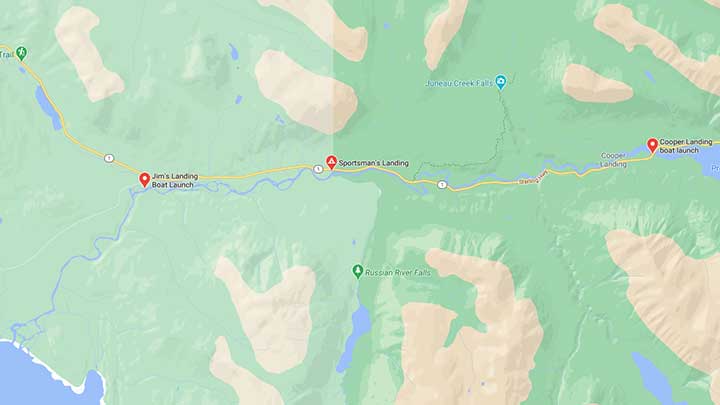
The upper Kenai River is an 18 mile stretch of river from Cooper’s landing boat ramp to Skialak lake. It can be fished from the shore or from a drift boat. Motors are not allowed in this section of the river. It is common to drift fish the upper Kenai River from Cooper’s landing boat launch to Jim’s landing boat launch. This stretch of the river is about 13 miles long. Fishing can be done while drifting, anchoring, or pulling the boat onshore and fishing from the bank in good fishing holes.
Middle Kenia River
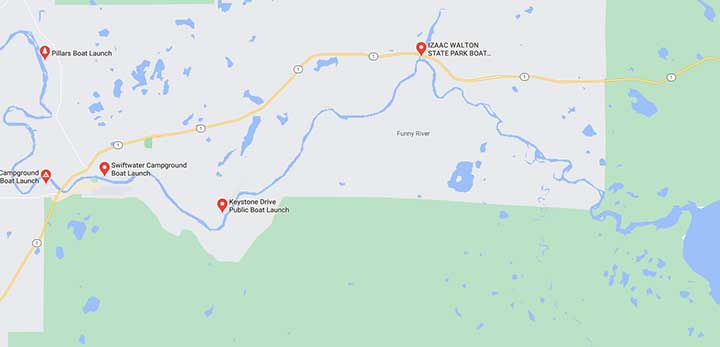
The middle Kenia River is around a 20 mile stretch of river and runs from the west side of Skialak Lake to the Soldotna bridge. This section can be fished with a drift boat or a motor boat. Early in the year, the level of the river can make it difficult to use a motor in the first few miles. Another area to be cautious of is the Naptown rapids where there can be significant rapids and rocks to traverse.
Lower Kenai River
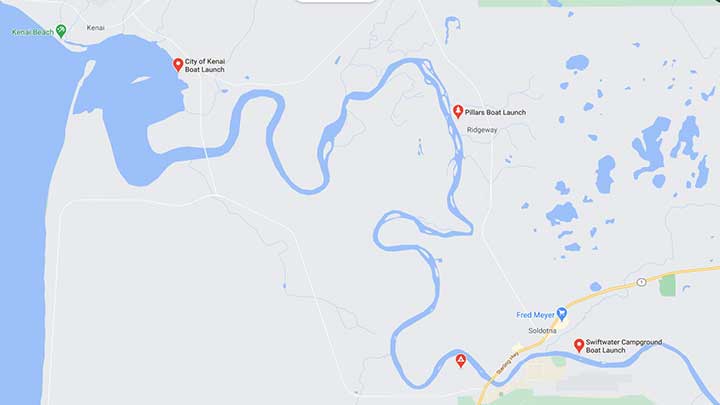
The lower section of the river is another 20 mile stretch from the Soldotna Bridge to the city of Kenai boat launch near the entrance to the ocean. This can be fished with a motor boat of less than 50 horsepower or drift boat. The river is slow-moving and it is good to have a motor. It is common to anchor and fish many areas of the river. This is a great fishery as all the salmon come through this section. Also, this is where the salmon first enter the stream so nice bright chrome salmon can be caught.
Drift Fishing on The Kenai River
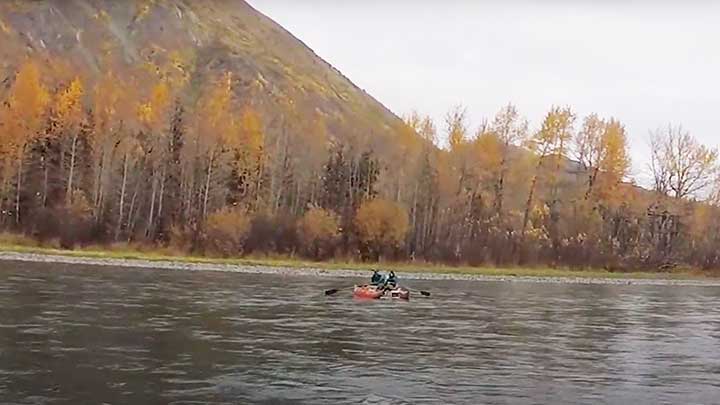
Drift fishing is a popular way to fish the Kenai River, especially the upper Kenia. The boats are typically made with floats or aluminum and are paddled with two oars. Kayaks can also be used. This is a great way to fish large sections of the river that would very difficult to reach by land.
The key to being able to drift fish is getting someone to drop a vehicle off down the river. This allows you to get back to your vehicle with the boat trailer. Another great option is to use a shuttle service. An individual will drive your vehicle down the river while you are drift fishing. This typically costs around $35. Not a bad deal as two people are needed to make the trip in order to drop the vehicle.
2. Russian River
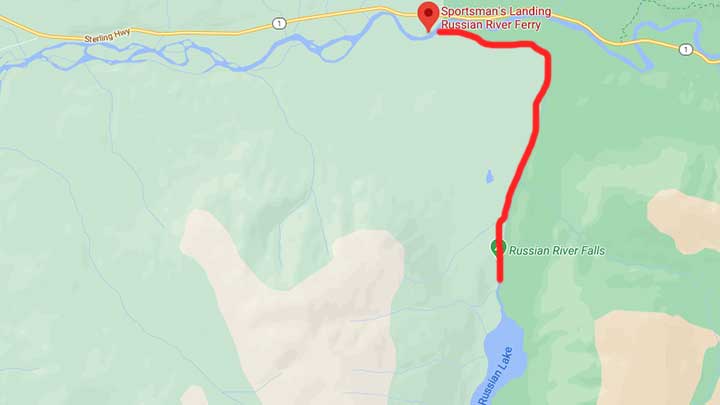
The Russian River is a little over 3 miles of river that runs from the lower Russian lake to the Kenai River. It is shown as the red line in the map above. This river is not very deep and has boardwalks along much of the banks to make it so people can access the stream without trampling the vegetation and banks of the river. This is a great place for people that want to fish sight salmon with a stream feel rather than fishing deep in a river.
The Russian river has an early run of around 25,000 sockeye salmon from mid-June to mid-July. Immediately following that from mid-July to early September there is a second run of around 78,000 sockeye salmon that enter the river.
Russian River Ferry
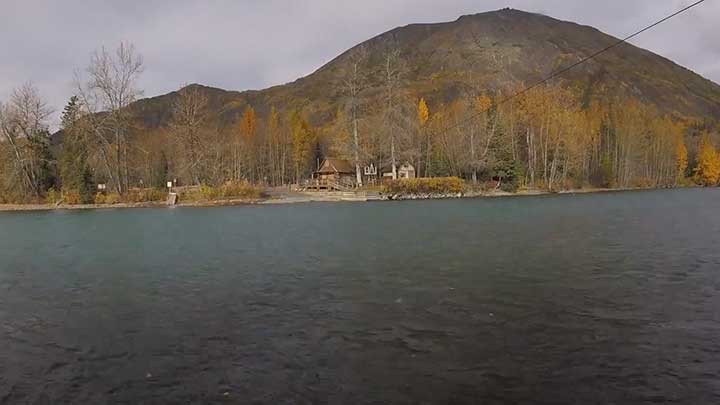
From highway 1 there is a Russian cable ferry to cross the Kenai River which is shown above. I was there in October and the ferry was not in the water and the only way to cross the stream was to drive to the Russian River campground and hike down to the river. Fishing the confluence where the Russian River and Kenia River meet is a good place to fish but it is a sanctuary area and fishing is prohibited from May 1st to July 14th. This is just on the other side of the ferry. From July 15 to August 20th this area is artificial fly only. There is another sanctuary area just downstream of the confluence. Make sure to read the regulations before fishing here. Below is a video with more information about fishing the Russian River in Alaska.
3. Kasilof River
The Kasilof River is 17 miles long and starts in the very large Tustumena Lake and flows into cook inlet. This is only about 25 miles down the road from Sterling and the lower Kenia River. Both are great fisheries and are going to be busy during peak salmon season.
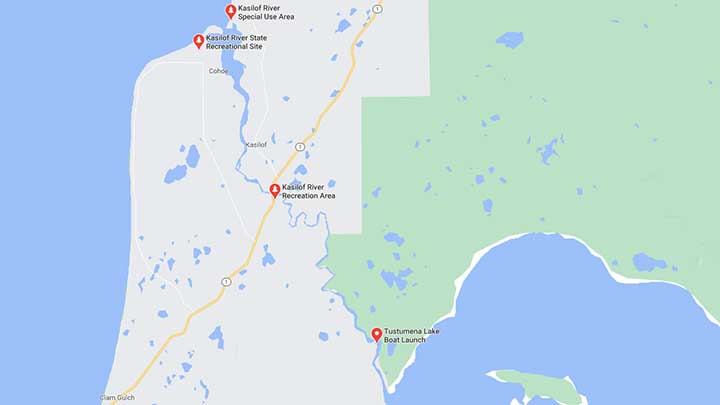
It does have two runs of king salmon but there are considerably fewer fish than on the Kenai River. The big salmon run for the Kasilof River is from mid-June to mid-August where around 540,000 red salmon enter the river. Around July 20th half the reds will have entered the river and is prime time to fish fishing for sockeye salmon.
4. Willow Creek and Susitna River Confluence
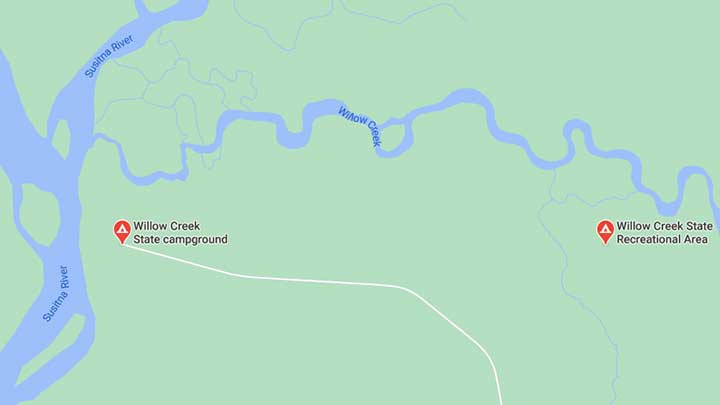
Willow Creek is about a 1.5-hour drive from Anchorage. This is a popular place to camp and fish and is known for both king and silver salmon. King salmon comes first and prime time is early July. August is a good time for coho fishing. The best place to fish is the conference where the Susitna Siver and willow creek meet. The Sustina has stained glacier water while Willow Creek has more transparent water. Make sure to check the and emergency fishing orders as this fishery can add in rules or stop fishing based on fish counts. In this area, there are also jumbo rainbow trout, dolly varden, and arctic grayling.
5. Ship Creek in Anchorage
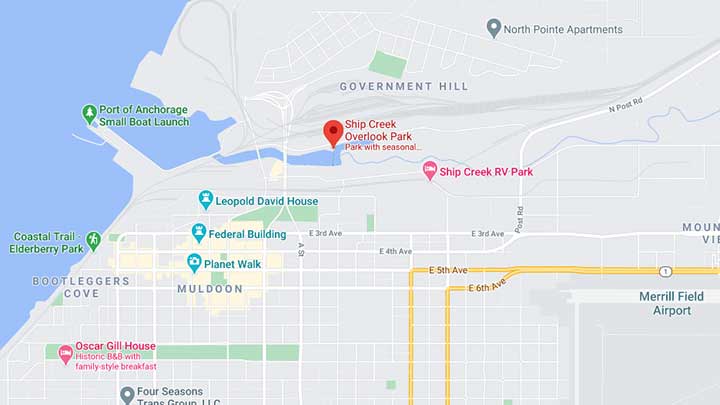
Ship Creek is located in downtown Anchorage. This makes it a convenient spot for people who live and work in Anchorage to catch salmon. Ship creek has both King and silver salmon runs. The king salmon are originally released as young hatchery fish and anglers are allowed to catch one fish per day when they return four years later. There is an annual limit of around 3-5 kings for each angler in the state of Alaska. If you are visiting Anchorage for work or for vacation this is a place to check out and see if the fish are biting. Peak king salmon fishing is mid-June and peak coho fishing is early August.
In the video above anglers are fishing for silver salmon in Ship Creek in Anchorage Alaska.
6. Bird Creek
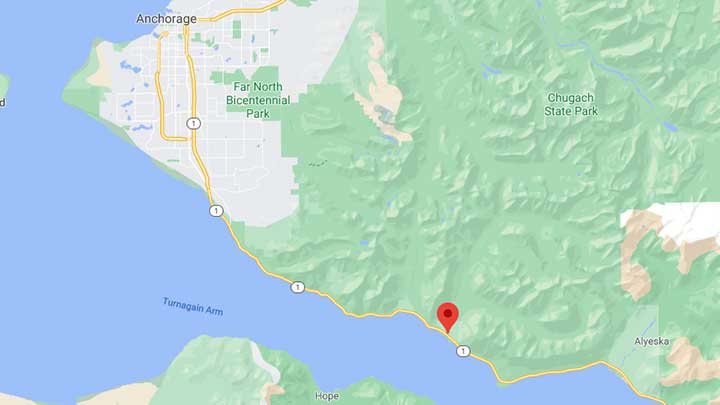
Bird Creek is another popular place to fish for coho salmon cause it is about a 30-minute drive south from Anchorage. This is a great place for locals to fish after work or two stop and fish when traveling to other parts of Alaska. The coho salmon are stocked as smolt and return three years later. There is a large parking lot a short distance from the river. The lower river is what is fished which is the first 500 yards from the bridge. There are Alaska Fish and Game makers upstream where river restrictions and private property begin. The video below shows anglers fishing at Bird creek. The best time to fish in Bird Creek is in early August.
7. Gulkana River
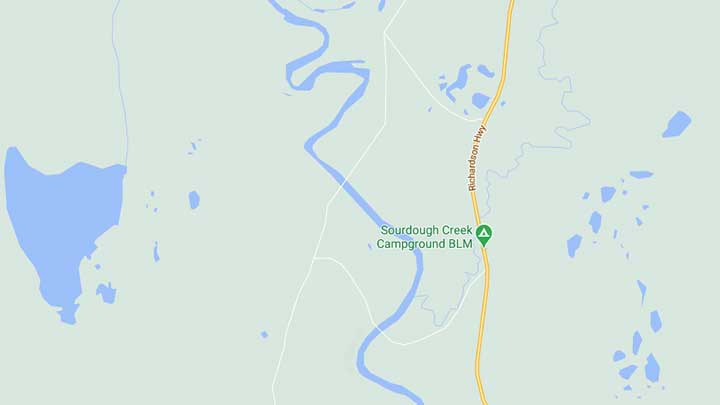
The Gulkana River has large numbers of both king and sockeye salmon. The Sourdough creek campground is located about 4 hours from Anchorage. From this location, there is some river access from the bank. However, an adventurous 50-mile float trip can be done from the Paxson Lake campground to the Sourdough Creek campground. This is shown in the video below done by a person in a kayak. If you have your own raft there is also a shuttle service in the area for your vehicle. July and August are the best times to fish this stretch of the river.
Frequently Asked Questions
What are good lures to catch salmon in rivers?
The best salmon lures depend on what type of salmon is being targeted. Silver salmon and pink salmon have a strong bite and will hit spinners, spoons, baits, beads, and flies. King salmon can be caught using spoons, diving plugs, and mag lip plugs. Sockeye salmon are the most difficult to get to bite. For this reason, they are typically caught by flossing the salmon. This is a snagging technique but typically hooks the fish in the mouth. A 3-6 foot leaser with a fly is attached in front of a 1/2 ounce weight. The rig is cast into the stream and drifted horizontally across the mouth of the fish. This is not always league and should only be done for sockeye salmon in streams and rivers.
Where can I fish on the Kenai River?
There are three sections of the Kenai River, the lower, middle, and upper sections. There is some access in all of these areas to fish from shore. The upper river can be fished by drift boats only and the middle and lower can be fished with drift boats or motor boats. The confluence of the Russian River and Kenai River is a very popular location to fish for red salmon. In peak season fishing the bank and river can get crowded which is why having a drift boat is a good idea.
What is the best month to fish in Alaska?
Alaska is a big state so it does depend on where you are going to be fishing. For stream fishing, the end of July and early August is prime time for large numbers of fish. It is also going to be the busiest time for people fishing so some anglers prefer to come earlier or later to avoid crowds. From May until October salmon can be caught in streams. If you are not sure how or where to fish call a local guide or charter captain in the area you will be fishing. They can tell you what types of fish should be around. Sometimes salmon runs come a week earlier but more often are a little late. When fishing in Alaska assume it is going to be pouring rain the entire time you are there. Sometimes it is sunny all week and sometimes it rains all week. Rain is not a bad thing you just have to dress for it.
References
Alaska Department of Fish and Game, (2021). Fish Counts – Sport Fish – ADF&G.
https://www.adfg.alaska.gov/sf/FishCounts/
Alaska Department of Fish and Game, Kenai River Regulations
https://www.adfg.alaska.gov/static/regulations/fishregulations/PDFs/southcentral/2020sc_sfregs_kenai_river.pdf
Captain Cody has worked on charter fishing boats in the Florida Keys, Virgin Islands, and Alaska. Growing up in Pennsylvania Cody has also done extensive freshwater fishing including bass fishing tournaments. Cody strives to provide detailed information about the best fishing gear and tactics to help both novice and experienced anglers have a more productive and enjoyable time on the water. Cody also has a background in aerospace engineering and neuroscience but really only takes pride in being good at one thing and that is fishing!
